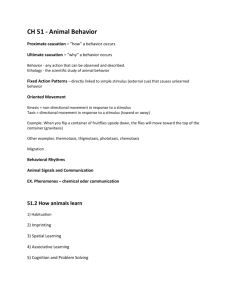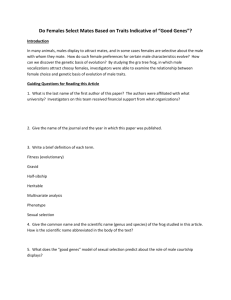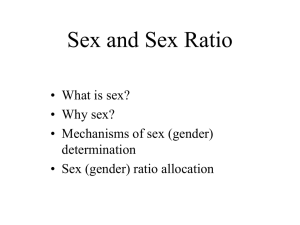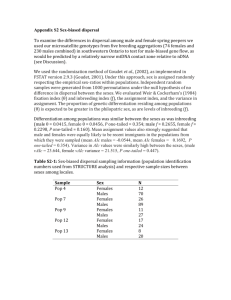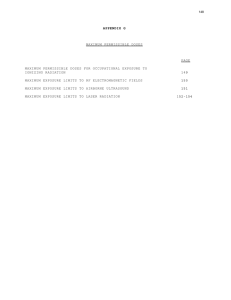Detailed Protocol - Proceedings of the Royal Society B
advertisement
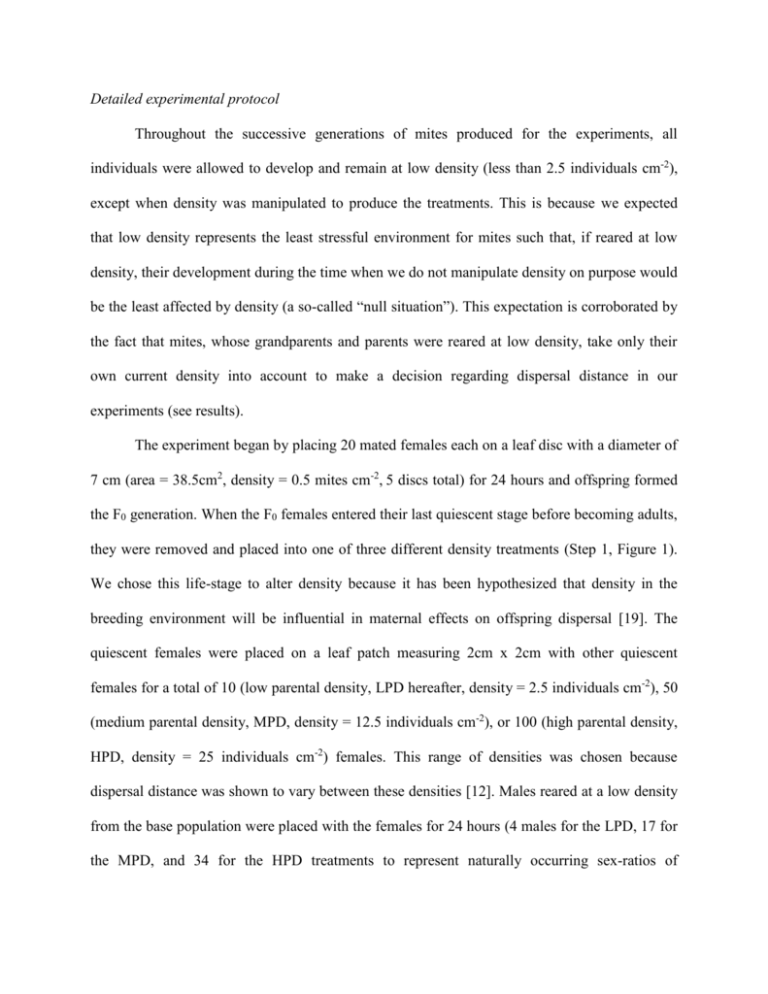
Detailed experimental protocol Throughout the successive generations of mites produced for the experiments, all individuals were allowed to develop and remain at low density (less than 2.5 individuals cm-2), except when density was manipulated to produce the treatments. This is because we expected that low density represents the least stressful environment for mites such that, if reared at low density, their development during the time when we do not manipulate density on purpose would be the least affected by density (a so-called “null situation”). This expectation is corroborated by the fact that mites, whose grandparents and parents were reared at low density, take only their own current density into account to make a decision regarding dispersal distance in our experiments (see results). The experiment began by placing 20 mated females each on a leaf disc with a diameter of 7 cm (area = 38.5cm2, density = 0.5 mites cm-2, 5 discs total) for 24 hours and offspring formed the F0 generation. When the F0 females entered their last quiescent stage before becoming adults, they were removed and placed into one of three different density treatments (Step 1, Figure 1). We chose this life-stage to alter density because it has been hypothesized that density in the breeding environment will be influential in maternal effects on offspring dispersal [19]. The quiescent females were placed on a leaf patch measuring 2cm x 2cm with other quiescent females for a total of 10 (low parental density, LPD hereafter, density = 2.5 individuals cm-2), 50 (medium parental density, MPD, density = 12.5 individuals cm-2), or 100 (high parental density, HPD, density = 25 individuals cm-2) females. This range of densities was chosen because dispersal distance was shown to vary between these densities [12]. Males reared at a low density from the base population were placed with the females for 24 hours (4 males for the LPD, 17 for the MPD, and 34 for the HPD treatments to represent naturally occurring sex-ratios of approximately 1 male to 3 females). After males’ removal, the fertilized females remained for 72 hours in their experimental density treatment, such that mothers were exposed for four days to the experimental density. They were then isolated on 2cmx2cm leaf patches to lay eggs for another 24h. Offspring from these eggs (Day 5 eggs) (F1) were then allowed to develop at a low density of approximately 1.5 individuals cm-2, and when the F1 females were one to two-days old they were assessed for dispersal distance in the three usual densities (Step 2, Figure 1, see section “Quantification of dispersal distance”). To test for grand-parental effects on dispersal distance, part of the F0 females were not isolated to lay eggs after exposure to their density treatment, but instead grouped by 5 on a leaf measuring 3cm x 3cm (density = 0.56 individuals cm-2). The mothers laid eggs for 48 hours and their offspring (males and females; F1b generation) were allowed to develop at an average low density of 2.5 individuals cm-2. The female offspring were removed 3 days after their eclosion and allowed to lay eggs individually on a leaf measuring 2cm x 2cm (F2 offspring generation; step 4). These F2 offspring had thus mothers whose density was low (2.5 individuals cm-2) and common to all of them but whose grandparents were exposed to the three different density treatments. When these offspring were one to two-days old, they were also assessed for dispersal distance in the usual three densities.
